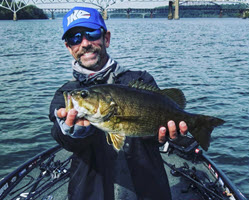
In the first part of my Ultimate Spinnerbait Series, I outlined when and where I use different kinds of spinnerbaits. It’s one of the greatest categories of lures ever made, but if you don’t dial in the proper retrieve, having the right blade style, color and other components really doesn’t matter.
The good news: with three basic retrieves, you can maximize your effectiveness. I tailor them to the different zones of the water column – top, middle and bottom – and by thinking of it that way, you can really improve your game.
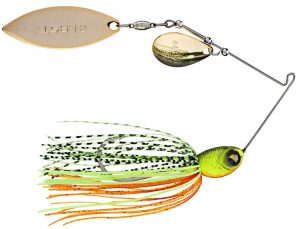
For the top of the water column, I use what I call a “burning” technique. In other words, I use the rod and reel to keep the lure up high, from waking the surface down to about a foot. This works when fish are feeding up, especially in clear to ultra-clear water. Start by making a long cast, often across a flat or down a tapering point. Once the lure hits, click the bail immediately, keep your rod tip high, and reel fast. You want the rod tip at a 1 or 2 o’clock position.
The real key to the burn is adding slight short pauses every few cranks. That allows the skirt to breathe and the blades to stutter and flash. For that reason, I like a tandem or double willow spinnerbait. Don’t use a Colorado blade for your smaller blade – it has too much cup and will blow out. For the same reason, smaller blades are better than large blades. They still have plenty of flash, but not as much “grab.”
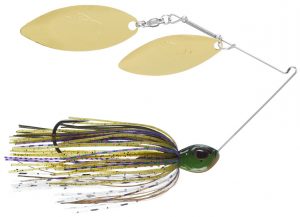
Of course, a lot of the time, fish are in the middle of the water column, whether in open water or next to a dock, bush or sea wall. This is where I employ a moderate retrieve. I call it “jerking the spinnerbait.” Cast out, and let your lure fall a little. It’s a bonus if you know the depth of the water and where the fish are sitting. You can count it down to them. Then you use a slower retrieve than the burn, something steady and methodical, but give it a little jerk or twitch every eight or 12 winds of the reel. That is usually when they bite.
My favorite spinnerbaits for this retrieve are tandem models. Water color determines whether I’ll use a Colorado/willow or an Indiana/willow, or even two Colorados. Typically when it’s dirtier I want the blades that push more water.
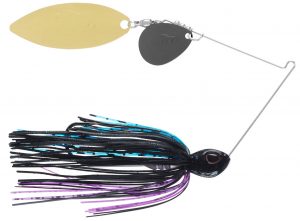
My third retrieve is for when fish are super low in the water column or on the bottom. It’s called “slow rolling.” I use it in heavy cover, moderate cover, and sometimes even in open water. The key is to cast the lure out and let it go to the bottom. You’ll know it’s there when your line goes slack. Then start a retrieve that’s just fast enough to get the blades turning. Barely turn the reel handle and add in some occasional long pauses. I like single-bladed spinnerbaits for this retrieve. In clear water, that’s usually a willowleaf blade. In stained water I like an Indiana. In muddy water, usually a Colorado gets the nod.

Of course, even if you have the right lure and the right retrieve, if you use the wrong tackle to fish your spinnerbaits you’re going to miss or lose a lot of fish. While you can use the type of rod you feel most comfortable with, I generally find it hard to throw spinnerbaits 3/8 ounce and u on anything but baitcasting gear. Indeed, that’s what I prefer for just about all my spinnerbait fishing.

Let’s start with the rod. With single-hooked lures, so you have to let the fish inhale the lure and then have the power to drive the hook home. If your rod is too stiff, you’ll pull the spinnerbait away when you feel that fish bite. If it’s too limber, you can’t get a solid hookset. That’s why a medium action, moderate rod is the deal for this technique. I prefer what I call a “70/30” model – the top 30 percent of the rod bends, but the remaining 70 percent is all backbone. This lets you cast accurately, allows the fish to get the lure, and results in penetration just about every time. A 7-foot model is my favorite of all time, but I’ll sometimes use a 7’2” or a 7’4” if I’m making long casts.
I pair my rods with low profile Abu Garcia baitcasting reels. If you’re burning, you’ll want something from a 7:1 to a 9:1 gear ratio. Generally I believe 8:1 to be the deal. For a medium retrieve, try something in the 7:1 range. When slow rolling, a 6:1 to 7:1 model gets the job done. If you can afford all three, that’s ideal, but if you can only justify one, go with the 7:1. It allows you to speed up or slow down as necessary. It can really do it all.
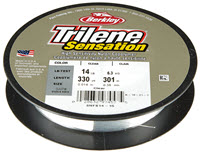
Finally, make sure you use the right line. Depending on the circumstances, monofilament, braid and fluorocarbon all come into play. I use mono the least – since it floats, I generally just use it when burning the lure, keeping it high. I like 12 to 20-pound test, usually settling on 15 or 17.
Braid gets the call based on one factor only: COVER. When I’m “in the jungle,” whether that be the thickest weeds or gnarly laydowns, this line with zero stretch may be the only option.
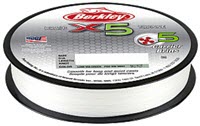
I probably use fluorocarbon for 65 percent of my spinnerbaiting, usually 15 or 17 pound test. It sinks, it’s clear and it’s abrasion resistant, which means that I have maximum control over my lure and the best chance of getting the fish in the boat. No matter which line you use, don’t overpower or underpower your rod.
I hope you liked this series of spinnerbait tutorials. I promise that if you learn to fish this lure properly, it’ll become one of the most valuable tools in your tackle box.
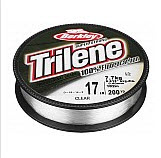
__________________________________________________________
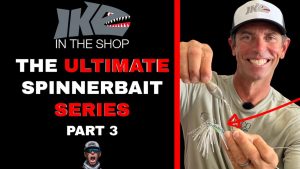
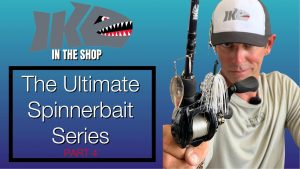
Like Ike on Facebook, and follow him on Instagram and TikTok for fishing and fun content.
Subscribe to Mike’s YouTube channel, to ensure you see every adventure video. (Download the YouTube app on your phone and the videos will come to you automatically.)
Return to Mike Iaconelli’s website

















